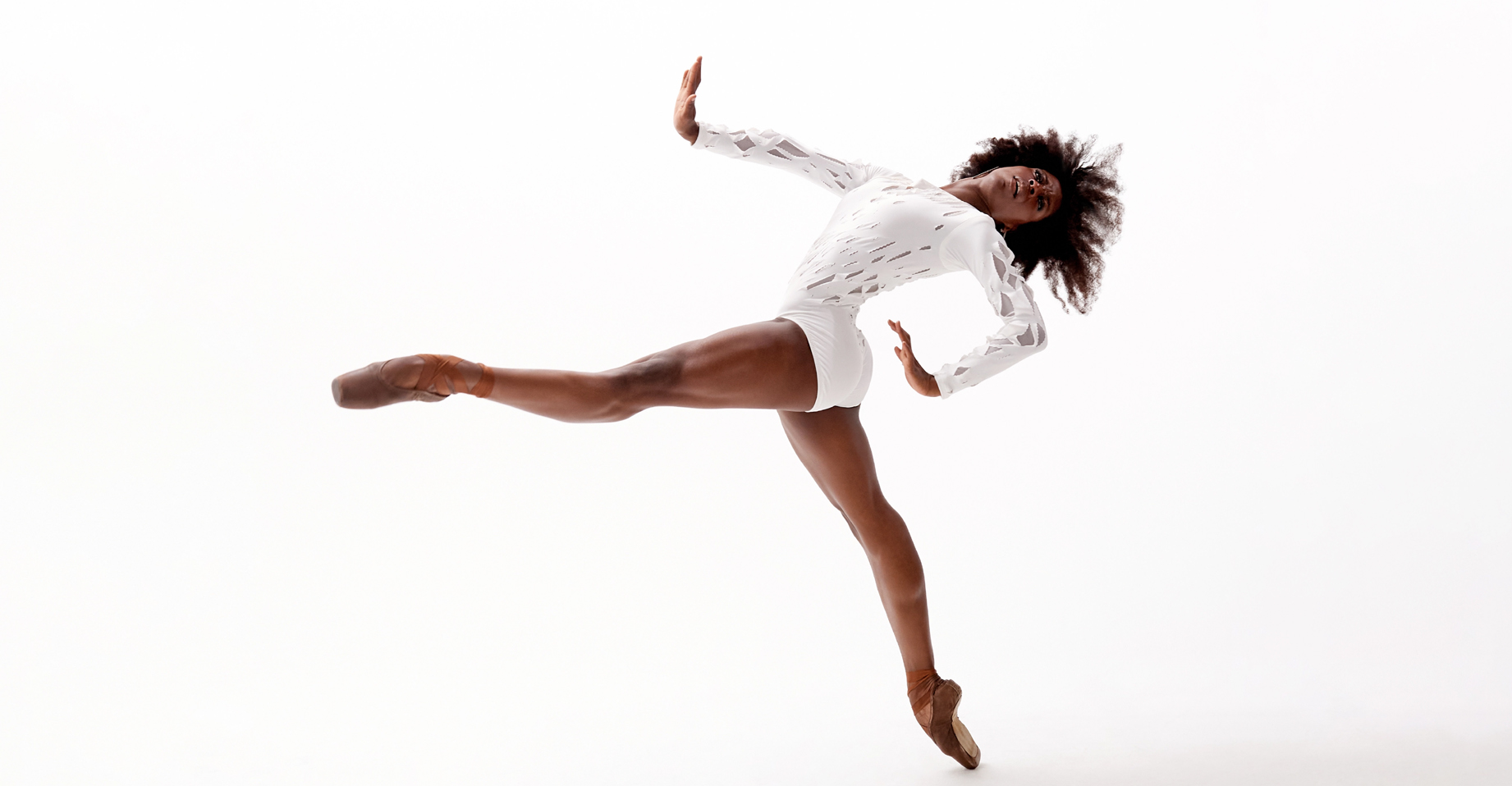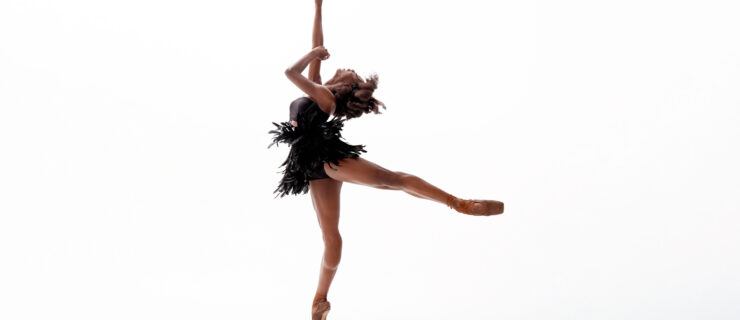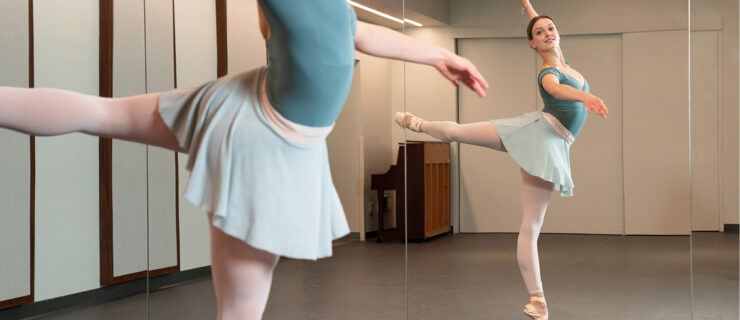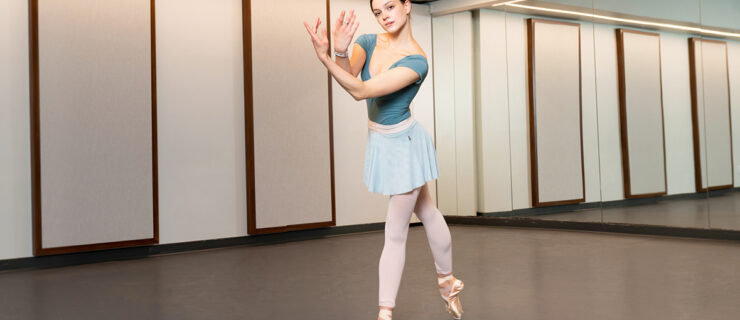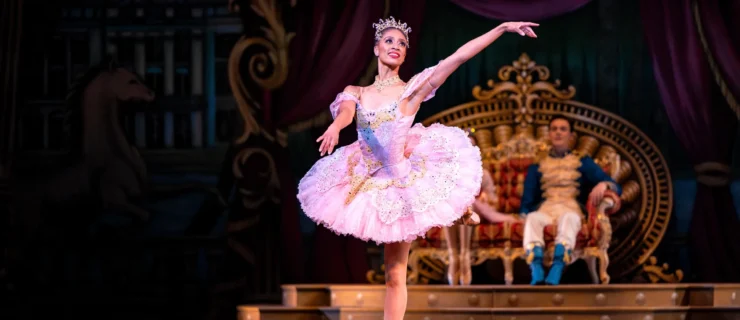Digging Deep: Complexions Contemporary Ballet’s April Watson Brings Her Whole Self to the Stage
When Dwight Rhoden, co-artistic director of Complexions Contemporary Ballet, first saw April Watson at a company audition, “gravity” was the word that came to his mind. “She has a power and depth that she brings to her dancing,” says Rhoden, who also serves as resident choreographer of the company he co-founded and directs with Desmond Richardson. He had heard about Watson’s talent through the grapevine—including from multi-hyphenate artist Debbie Allen—and was under the impression that she had endless possibilities. “When she showed up, I was like, ‘Wow. Okay, well, she is not going out the door’—at least not if I could help it!”
Watson, 26, joined Complexions as an apprentice in late 2019 and was accepted into the company within a year. Since then, Rhoden and Richardson have pushed her to the forefront. Onstage, she’s a captivating blend of elegance and intensity. She uses her whole body to communicate to the audience, giving flashes of playfulness or mournfulness through her eyes. Her stunning technical precision—razor-sharp turns, endless extensions, transcendent leaps—reveal the depth and breadth of her classical training.
Rhoden has created a number of works on her, including this season’s This Time, With Feeling, and the signature duet “With or Without You,” from For Crying Out Loud, to music by U2. “She has a very deep, innate ability to tell stories to her work,” Rhoden says. “She is definitely becoming a leading lady.”
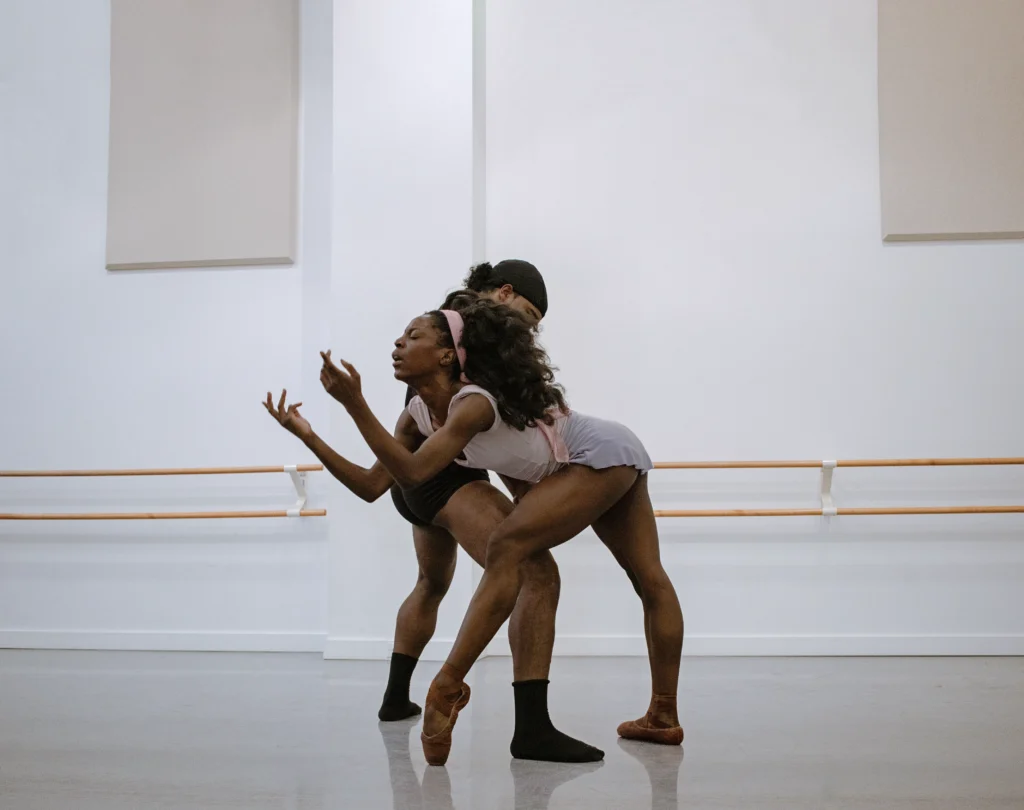
Building Her Dream
The youngest of four children, Watson was born and raised in Winston-Salem, North Carolina, and had always had a natural aptitude for dance. “I was born flexible; I used to sleep in a split,” she says. “My mom would catch me walking on my tiptoes all the time. So dancing has always been a part of my life. It chose me.” Watson’s teacher noticed her flexibility and propensity for walking on her toes and urged her mother to have her audition for the University of North Carolina School of the Arts Preparatory Program at age 8, where she trained through high school.

Watson has fond memories of UNCSA, living full-time on campus starting at age 13 and training under influential instructors like Susan Jaffe, Karen McDonald, Nina Danilova, Dayna Fox, and Brantly Shapiro. Throughout her elementary- and middle-school years, she was also mentored by former dancer and UNCSA graduate Martin Miller. “He helped me with privates, auditioning, introducing me to other ballet masters, and helping me get fitted for my first pair of pointe shoes,” she says. “He pushed me to become better and to go for my dreams.”
While she also trained in contemporary, Watson was most drawn to ballet. “I loved how graceful it felt, how regal it felt. I felt like I was in my own skin.” Her favorite ballet has always been Swan Lake, and she was inspired by dancers like Lauren Anderson, Misty Copeland, Gillian Murphy, Svetlana Zakharova, and Michaela DePrince.
Yet her love for classical ballet was something of a double-edged sword as a Black dancer. “The biggest challenge I faced was not really feeling sure what I’m supposed to look like and supposed to be,” Watson says. “Though I had the facility, I felt like I didn’t belong in the space. But it felt right in my heart.” She managed these insecurities on her own, she says, and isn’t sure if her teachers were even aware of them. “I had to realize that other people’s opinions and perceptions of me didn’t matter. What mattered was what I thought of myself.”
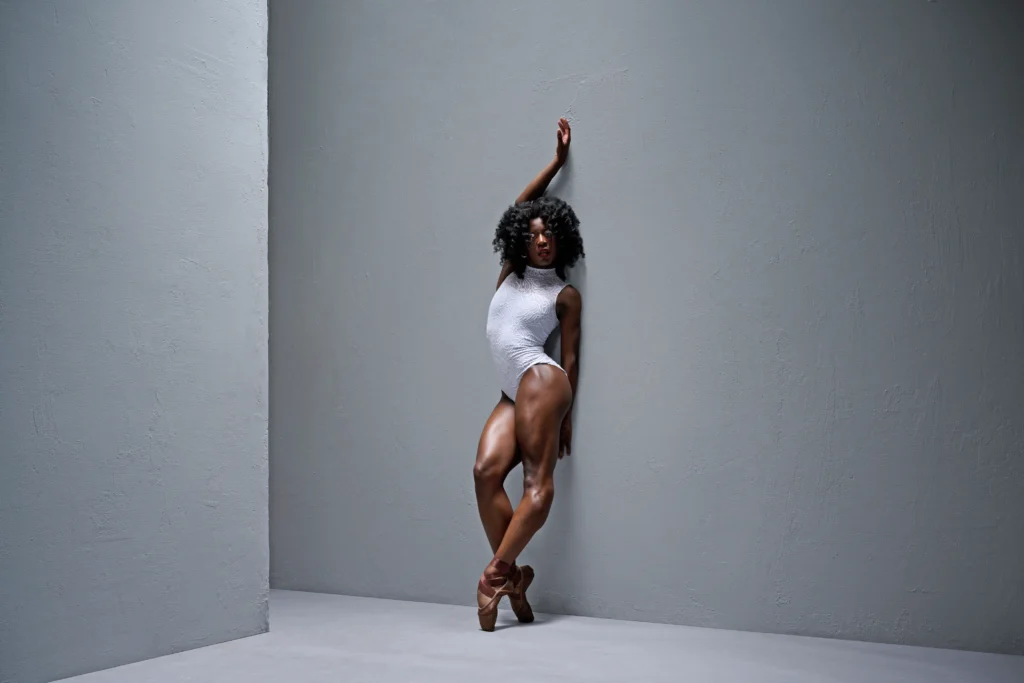
Watson originally intended to pursue a classical company after high school. But when she auditioned for the Debbie Allen Dance Academy’s summer intensive her senior year and received a scholarship, she changed course. “I felt that, after being in a predominantly white space, I needed a place that felt like home,” says Watson. When the summer intensive ended, Allen asked her to stay on at DADA as artist in residence for two years, which included a full scholarship with free room and board, performance opportunities, and a part-time job working the front desk.
The depth and breadth of training at DADA was new to Watson. In addition to ballet and contemporary, she took classes in Dunham technique, African, tap, flamenco, and hip hop. “Ms. Allen really cared for the dancers in a motherly way,” Watson says. “She would always try to support dancers who she saw potential in. I learned about work ethic, that if you want something, work hard and go and get it.”
A New Frontier
After two years building her versatility at DADA, Watson auditioned for Complexions. “The diversity initially drew me in—not only the fact that no one person looked the same, but also the fact that everyone in the company danced artistically differently.”
Rhoden says all Complexions dancers are soloists when they come in, but he took a slightly slower approach with Watson. “She was taken as an apprentice for a year to give her time to get more familiar with the style that would call upon her to bring her strong classical training into a contemporary frame,” he says. Watson has since found a space where she is happiest, she says, “a place where I fit in and can break down barriers at the same time.”
Of Rhoden’s work, which Complexions mainly performs, Watson says: “[I love] the passion that comes off of the page with Dwight’s choreography. I love the storytelling that he puts in his work.” Her favorites include his Woke and Love Rocks, both of which she says require her to dig deep. “They are two 45-minute ballets that are as physically demanding as they are emotionally.”
Watson continually seeks ways to enhance her performances through Pilates, weight training, and other forms of cross-training, like bike riding for stamina. She’s also intentional about nurturing her emotional and artistic sides. “I’m always taking extra dance classes, more so on the contemporary side; practicing what you want to say through other people’s movement definitely helps me,” she says.
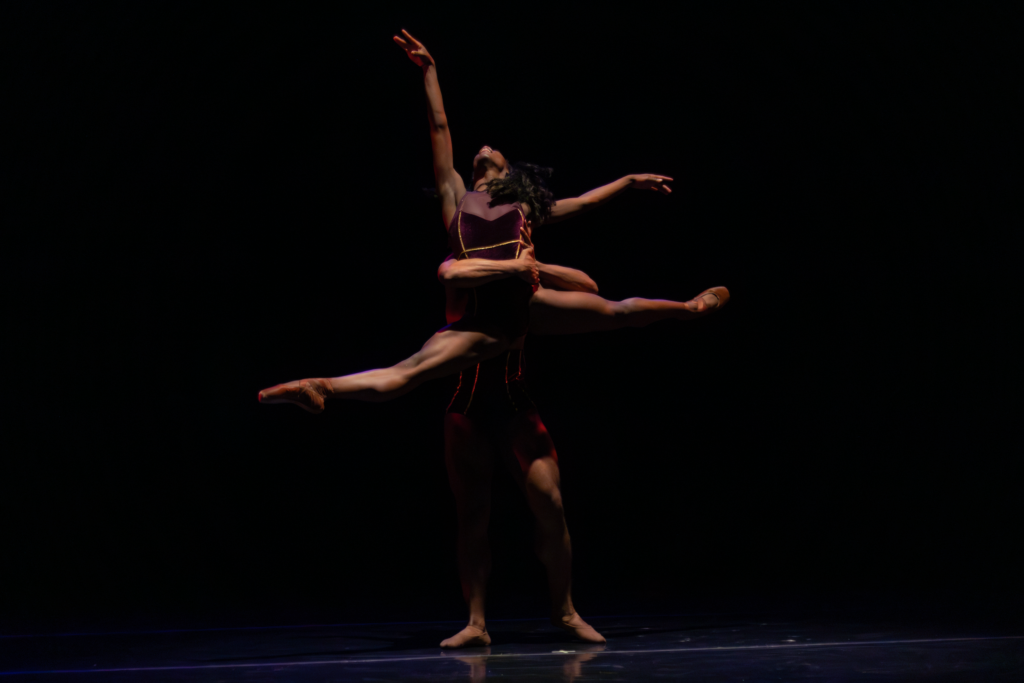
Watson’s frequent partner at Complexions, Joe Gonzalez, says she’s quiet in the studio. “But she is really funny when you get to know her. Also, she’s always, always working on something to be better.”
Rhoden also lauds Watson’s exacting, conscientious approach to her work. “She tries to honor the choreography and really wants to dig into whoever she’s working with, whether it’s Justin Peck or me. She doesn’t shy away from something that’s difficult. I think that’s an exceptional quality in an artist.” Watson’s debut this season in his 1995 pas de deux Ave Maria “pushed her into a new league as an artist,” Rhoden continues. “It’s a difficult pas de deux that many companies and principal dancers have performed. April has stepped up to meet the mark of a very challenging duet and be triumphant.”
Watson says Ave Maria has been one of her most significant and demanding roles so far. “The amount of abandonment and openness that you get to show the audience is what makes it so beautiful,” she says. Former Complexions and Dance Theatre of Harlem principal Christina Johnson, who originated the role, coached her. “Throughout the process, it was broken down not only technically but emotionally—I connected with it spiritually,” Watson says.
Mentoring the Next Generation
In addition to dancing, Watson teaches at the affiliated Complexions Academy. “I love passing on knowledge to younger students,” she says. Watson advises young dancers to make time for the “important things,” which to her means discovering who they are as whole people. “Make sure that your mental and spiritual health is at its best so that when it is time to perform, you know who you are outside of dance.”
She also believes young dancers’ training foundation is of utmost importance, and that they should also be well rounded. “Technique only goes so far. You want to be able to show people who you are within your dance training in a way that transports them.”
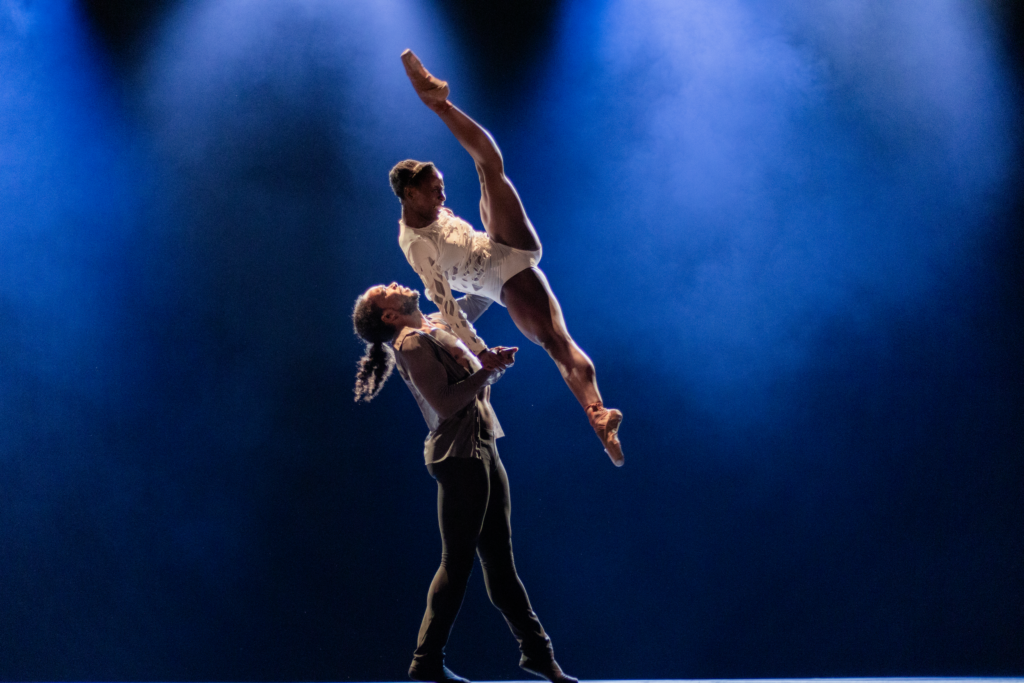
When she isn’t dancing, Watson enjoys riding motorcycles, roller skating, collecting records, and shopping. She also loves how extensively the company tours. “I’m so grateful that I get to travel and experience different places,” she says. “I love how different the people and customs are, along with trying and experiencing new foods and places.”
Watson’s challenges as a Black dancer aspiring to perform classical ballet became a catalyst for her substantial growth as both an artist and a person. “I’ve overcome,” she says, “by knowing who I am and maturing and knowing that I do belong in this space, because I’ve been born and called by God to be a dancer and tell stories through movement.”
